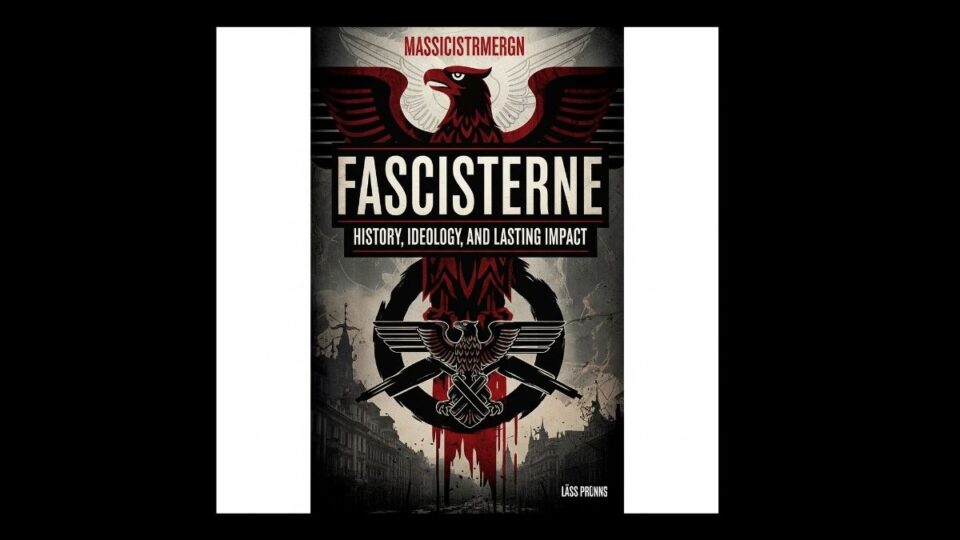Fascism has left a deep mark on the political and social history of the 20th century. When we talk about fascisterne (the fascists), we refer to groups and individuals who embraced an authoritarian, ultra-nationalist, and anti-democratic ideology. While fascism as a political movement rose to prominence in Italy and Germany during the early 20th century, its influence spread across Europe and even beyond.
This article explores the roots of fascisterne, their beliefs, the consequences of their rule, and why studying them remains important in today’s world.
Origins of Fascisterne
The word “fascism” comes from the Italian word fascio, meaning a bundle or group, symbolizing unity and strength. Fascisterne first appeared in Italy under Benito Mussolini after World War I. Italy was facing economic hardship, political instability, and social unrest, which created the conditions for radical movements to grow.
Mussolini’s fascisterne promised order, discipline, and national pride at a time when democracy seemed weak. Their rise was soon mirrored in Germany with Adolf Hitler and the Nazi Party, who built their power on similar ideals of nationalism, militarism, and suppression of dissent.
Core Ideology of Fascisterne
The fascisterne shared some common ideological principles:
- Authoritarian Leadership – They rejected democracy and believed in strong, centralized leadership under a single ruler.
- Extreme Nationalism – Fascisterne promoted the idea of the nation above all, often linked to myths of cultural superiority.
- Militarism – War and violence were seen as natural tools to achieve national goals.
- Suppression of Opposition – Fascisterne outlawed other political parties, censored the press, and persecuted critics.
- Collective Identity – Individual rights were considered less important than loyalty to the state.
This strict ideological framework made fascisterne powerful but also dangerous, as it often led to conflict and oppression.
Fascisterne in Europe
While Italy and Germany were the most infamous examples, fascisterne also appeared in Spain, Hungary, and other European nations. Francisco Franco’s Spain, for example, adopted elements of fascism while mixing them with traditional conservatism.
Across Europe, fascisterne exploited people’s fears of communism, unemployment, and loss of national pride. They used powerful propaganda and mass rallies to win support, presenting themselves as protectors of national identity.
The Consequences of Fascisterne
The legacy of fascisterne is deeply tied to some of the darkest chapters in modern history. Under fascist regimes, millions of people faced persecution, war, and genocide. Nazi Germany, led by Hitler, brought about World War II, which resulted in the deaths of tens of millions worldwide.
The Holocaust, driven by fascist ideology, remains one of the most horrific examples of where extremist nationalism and authoritarian power can lead. Mussolini’s Italy also brought violence and oppression, though not on the same scale as Nazi Germany.
Ultimately, fascisterne collapsed under the weight of their own aggression, but the scars they left remain visible in global memory.
Why Fascisterne Still Matter Today
Some may believe fascism belongs entirely to history, but studying fascisterne is essential even in the 21st century. Political extremism, nationalism, and authoritarian movements still appear in different forms around the world.
By understanding how fascisterne rose to power, we can recognize the warning signs:
- attacks on free media,
- scapegoating minorities,
- glorification of violence, and
- rejection of democratic values.
History teaches us that democracy is fragile, and vigilance is necessary to protect it.
Final Thought
The story of fascisterne is not just a lesson from the past but a reminder for the present and future. They thrived in times of crisis by exploiting fear and division, but their downfall showed the destructive consequences of authoritarian rule.
By studying fascisterne carefully, societies today can strengthen democracy, protect human rights, and resist the temptation of dangerous ideologies.
FAQs about Fascisterne
Q1: Who were the fascisterne?
The term fascisterne refers to individuals and groups who supported fascist ideologies, especially in Europe during the early to mid-20th century.
Q2: What did fascisterne believe in?
They believed in authoritarian leadership, nationalism, militarism, and the suppression of political opposition.
Q3: Where were fascisterne most powerful?
The most influential fascist regimes were Mussolini’s Italy and Hitler’s Nazi Germany, but similar movements appeared in Spain, Hungary, and other nations.
Q4: What impact did fascisterne have on history?
They caused widespread destruction, including World War II and the Holocaust, and left behind a lasting warning about extremist ideologies.
Q5: Do fascisterne exist today?
While classic fascism collapsed after World War II, some modern extremist movements share elements of fascist ideology, making awareness and vigilance important.

